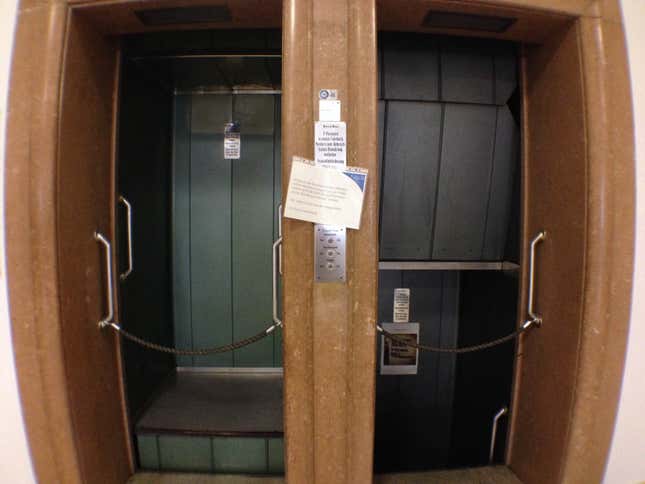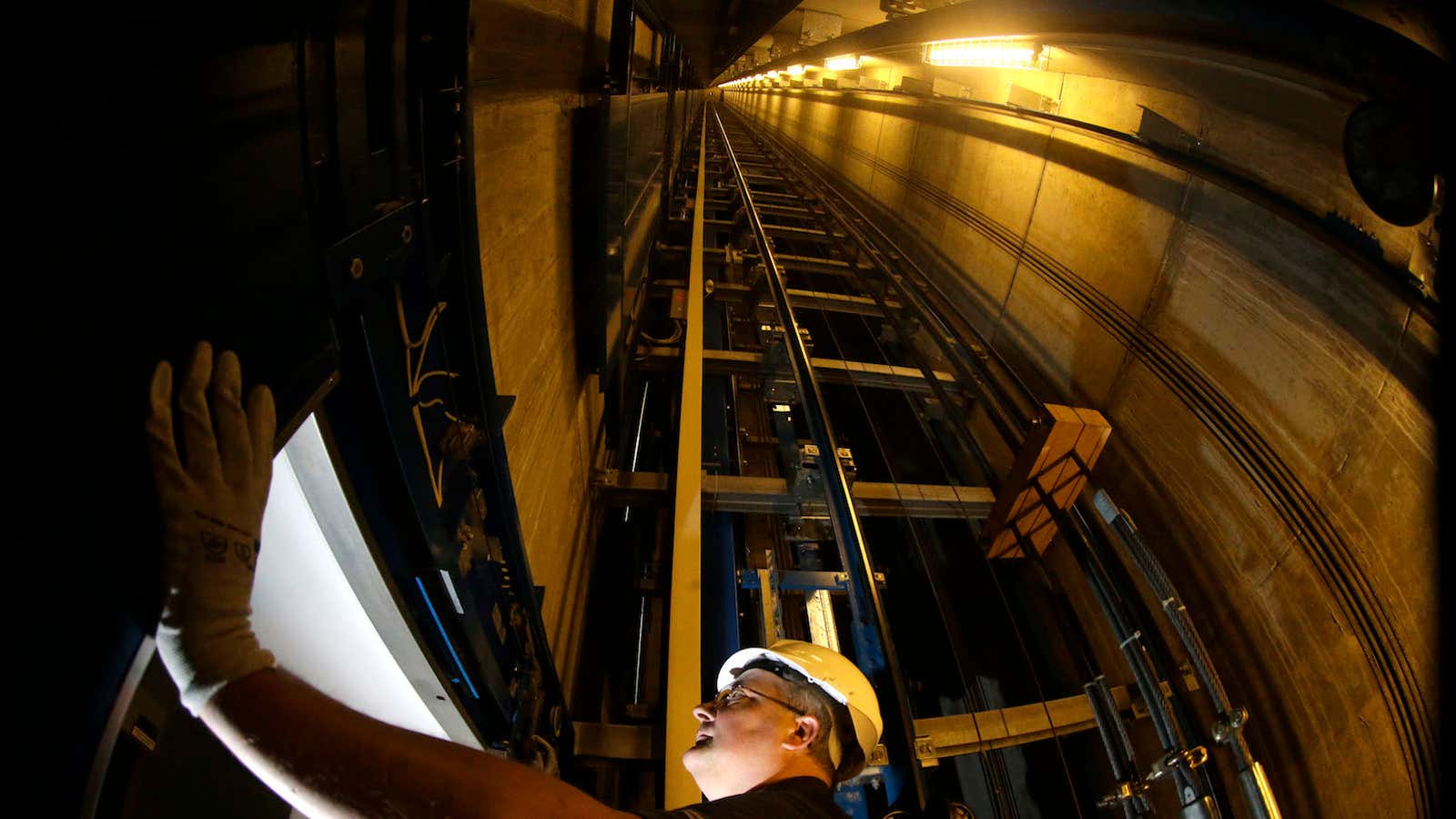A crackdown on Germany’s deathtrap vintage elevators has spurred a grassroots resistance movement to save them, and it looks like the people have won.
Named after the Lord’s Prayer, about 250 “paternoster” elevators still operate in Germany. The cabins, only large enough to hold one or two people at a time, have no doors. They move up and down through the building shaft in a continuous loop, and every few seconds, another cabin comes to each floor.
Efficiency is the main argument for the paternoster, followed closely by nostalgia as well as a taste for adventure. Riding a paternoster is no time to be staring at your smartphone: One must pay attention to the timing of your step out the door, lest you be squished.
Fear of injury has led federal labor minister Andrea Nahles to start limiting the paternoster’s use: In 2010, she proposed that only trained employees be allowed to use the elevators. Indeed, as of June 1 this year, paternosters are no longer supposed to be open to public use.
The move resulted in some Germans complaining about the “nanny state,” but also sparked the question: how would such a rule be enforced? Must safety monitors be stationed outside every paternoster?
“Sometimes the German reality unfortunately really surpasses every cliché,” wrote a reporter (German) for the Frankfurter Allgemeine. “The federal government believes it must protect the citizens even from thrill and risk. … Is a country with no other worries happy?”

This is not the first time Germany has attempted to get rid of its distinctive contraptions. The construction of paternosters has been banned in Germany since 1974, and fans of the grandfathered-in elevators pushed back against an earlier attempt to outlaw them in 1994.
Reiterating a common refrain, paternoster fan Cornelius Mager, told the Süddeutsche Zeitung (German) the ban was ridiculous: “You can never really prevent danger. Because then you’d have to ban cars, because there’s of course the danger of an accident. … These elevators are a part of industrial history.“
My own attempts to ride a paternoster in Berlin recently were futile: All the ones I visited turned out to be in areas reserved for building employees, and I had not thought ahead to make a paternoster appointment. I would have likely had better luck riding the Stuttgart Rathaus’ paternoster, which is considered something of a tourist attraction, reports Sächsischer Zeitung (German).
But it’s not all bad news for paternoster fanatics. On June 24, (German) the Labor Ministry bowed to public pressure and announced it would allow paternosters to remain in service, as long as signs are posted to warn of the elevator’s dangers.
Ultimately, it seems the spirit of paternoster was never really in danger, anyway: Manufacturer ThyssenKrupp Elevator AG is working on a paternoster-inspired system that can run both vertically and horizontally, and a working prototype of the system, called MULTI, will be unveiled this fall.
